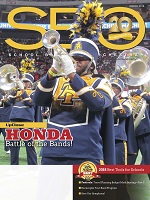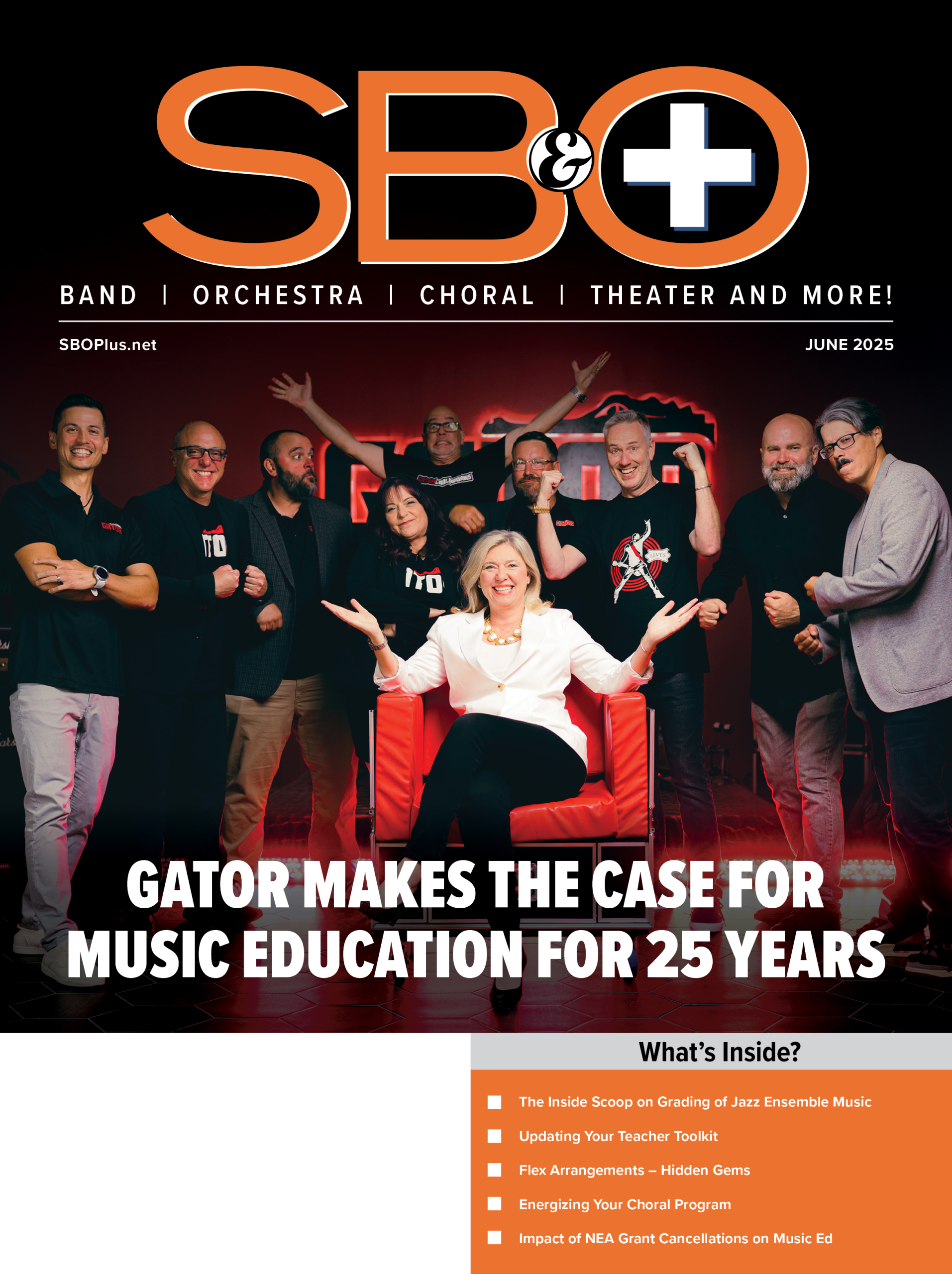In each article, regardless of topic, I try to feature old stand-bys, worthy pieces that have gone overlooked, as well as new releases. I recently wrote a series of columns highlighting choral music from history, which, by its very nature, neglected new releases. In an effort to achieve balance, I am turning my attention this issue entirely to new releases… actually, these publications bear a copyright year of 2007 or later. As always, I try to include works for a variety of voicings and difficulty levels, and from a variety of publishers and composers. Special thanks to guest contributors Michael Culloton and Diane Hill. Is there a release from the past two years you think is great but don’t see here? I may be able to include it in an upcoming column; send the title and composer to: drew@drewcollins.com.
– Drew Collins, forum editor
FOR CHANGING VOICE CHOIRS
Here We Come A-Caroling (English Carol, arr. Joyce Eilers) Hal Leonard
This tune is a holiday favorite, and Eilers’ arrangement is fun and easy to sing. Sopranos sing the melody for most of the piece and on occasion the melody moves to the altos. Altos and baritones have an easy, catchy and memorable vocal part. There may be a challenge in the occasional measures written in 6/8, which may be new for a junior high chorus. This arrangement is sure to put both the singers and listeners in a holiday mood! Available in 3-part mixed, as well as in SATB and 2-part voicings. Piano accompaniment.
~ Review submitted by Diane Hill
The Raven Watches Me (Vicki Tucker Courtney) Shawnee
Here is a piece written specifically for junior high singers that does not follow the traditional style(s) and formulas associated with works for that age group. Courtney uses daring harmonic and melodic language, writes in minor mode (often raising the 4th, 6th and 7th scale degrees, which helps illustrate the spooky text), and sets the meter/tempo in a moderate 6/8. This is a “go the distance” piece… that is, it may take your singers a little longer to “get” it, but when they do, they will beg to sing it. One final thought: one of the most difficult tasks a composer faces is how to end a piece. Courtney came up with the perfect solution for an unconventional ending that matches the text splendidly. Scoring is 3-part mixed with piano.
FOR TREBLE VOICES (EASY MEDIUM)
A Quiet, Patient Spider (Steve Kupferschmid) Shawnee
Bravo to Shawnee Press for daring to publish music for young singers that is innovative, while still being attractive. This is the second of three such pieces by this publisher that I am highlighting in this month’s column. Kupferschmid has adapted a Walt Whitman poem for his text, a bold move considering that Whitman’s poetry usually requires a mature interpretive mind. Be prepared to lead an intelligent, Socratic discussion about this text at some point during the rehearsal process. The composer makes approachable yet challenging use of chromaticism. But the biggest challenge may come from the tonality: it is essentially in d-minor, but the onsets and cadence points do not always reinforce this for the ear, making it less predictable for the singers. So, you will need to practice finding starting notes for each phrase. There are some tricky leaps, too, though the are generally arpeggiations of the chord being played in the accompaniment.
Ahe Lau Makani (Hawaiian, arr. Jerry Depuit) Shawnee
America has a rich and varied musical landscape: Spirituals, Gospel, Bluegrass, Broadway, Native American musics, Stephen Foster songs, shape-note hymns, to name just a few. Many of these genres have been well represented in choral arrangements, making it possible to expose students to the American musical heritage. However, there are several genres that are poorly represented. One of these is Hawaiian music. Jerry Depuit found this beautiful melody, and arranged it for 2-part treble voices and piano. Most of the piece is homophonic, but the final verse is in quasi-canon. The piece is in 3/4, with no chromaticism, and no notes faster than an eighth note. The result is a lovely piece with an easy-going waltz-like feel that sounds like a tropical sunset. Historic notes about the composers, as well as a pronunciation guide are included in the inside front cover. The music has three lines of text: the Hawaiian is on top, an easy-to-follow singable pronunciation is next, and a singable English translation is on the bottom.
FOR TREBLE VOICES (ADVANCED)
Stuku Puku (Stanislaw Wiechowicz) Roger Dean
The humorous text describes a dance between a fireplace poker and a broom. The music itself employs stylistic characteristics of, according to the editor’s comments, “the fastest of the Polish folk dances”. The original language is Polish, but a singable English translation is included. Scoring is SSA unaccompanied.
Getting Used to Heavens (Bradley Ellingboe) Kjos
The text by Ranier Maria Rilke is engaging, evocative, and inspiring, and Ellingboe’s music is a perfect complement. The music requires a certain level of proficiency on the part of the singers (changing meter, colorful harmonies, 4-part texture, etc.), but it is the sophisticated text that most sets this apart as an advanced piece. Be prepared to lead a discussion about it in class, otherwise you may end up with an emotionally disconnected performance. If you have an English teacher who is adept at interpreting poetry, perhaps you could have him or her in as a guest to lead the discussion. I performed this with my college women, and it fast became one of their (and my) favorites. Scoring is SSAA with piano accompaniment.
This Magicker (David Brunner) Boosey Hawkes
David Brunner’s music often combines a sense of forward momentum achieved through meter changes and motoric rhythms, colorful and unpredictable harmonies, elegant use of chromaticism, and a fantastic sense of text setting. In This Magicker, Chauntecleere, and A Song For Every Child, these strengths are deployed and juxtaposed in compelling ways. In these two pieces, Brunner uses 7/8 as the metric basis, then expands (to 4/4) or contracts (to 3/4) the meter to accommodate the musical phrase and/or text. The characteristics of his compositional style are what make his music so compelling, but are also the principal challenges for the rehearsal process. Whether used for a community-based children’s chorus (two of the three pieces mentioned here were written for such ensembles) or for an advance high school women’s chorus, I recommend isolating the 7/8 meter through group conducting, having the singers speak the subdivision (ONE-two-three-ONE-two-ONE-two) while clapping, or all of the above as a first step, maybe before even handing the music out.
MIXED CHOIR (EASY MEDIUM)
Dreams of Thee (Eric William Barnum) Walton
This is a beautiful text set to beautiful music. The text is sophisticated and evocative, the music is accessible but not predictable. Barnum wrote this piece for a junior high school, and it would also be attractive for older singers. Scoring is SAB with piano and #149;C’ instrument (violin works best).
Cantos De Mi Tierra (Jos



























